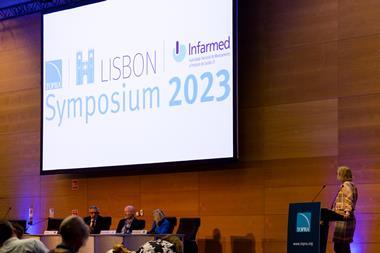Few would dispute that the medical technology regulatory system continues to creak under the strain imposed by the regulations on medical devices (Regulation (EU) 2017/745) and in vitro diagnostic devices (Regulation (EU) 2017/746). At the time of going to print, the Medical Device Coordination Group (MDCG) issued proposed measures to address the signifi cant and urgent challenges in ensuring suffi cient capacity of notifi ed bodies (NB), and readiness of manufacturers, to allow medical devices and in vitro diagnostic medical devices to be certified, in accordance with the MDR and the IVDR within the transition periods provided for in the regulations.1 In this issue, we highlight the challenges faced by the MedTech sector in the context of the new regulations, while also providing insight into how the device regulatory system continues – or should continue – to evolve to better meet the sector’s needs.
In the spirit of evolution, Colleen Watson and Frances Richmond critically review the further expanded role for the EMA in approval of novel and high-risk medical devices and consider how this might impact future device submissions.The authors suggest that the additional review brings a new level of complexity and criticism into an already strained review process and bring to light concerns of many regarding the need to now develop submission packages that address two diff erent sets of assessors (ie, NB and EMA).
Further to the heightened surveillance and performance requirements introduced by the MDR, Ana Quinn provides an informative overview of the increased obligations being placed on device manufacturers. Continuing the theme of other articles in this issue, Quinn highlights how interpretation of the extended requirements has been an issue for many manufacturers. However, she also off ers some clarity and advice on the nature of the changes, together with suggestions on how best to ensure compliance.
We highlight the challenges faced by the MedTech sector in the context of the new regulations
Also in this issue, Neil Armstrong draws our attention to the importance of subjective and qualitative risk management for medical devices and reacts to an increasing trend toward ‘risk management for risk management’s sake.’ Armstrong highlights the dangers in adopting a rigid and administrative style of regulation – which results in an objective and quantitative approach to risk management – and highlights how this approach conflicts with the subjective and qualitative nature of the type of benefit-risk analysis that historically has proved very successful in other industries.
Our final focus article considers the changes and challenges that lie ahead for the medical device regulatory system in the UK in the wake of Brexit. Richard Bassett describes how for the future UK MDR, it is critical to consider how the proposed regulations can achieve a ‘robust, world-leading regulatory regime for medical devices’, suggesting that a number of key initiatives – in the areas of industrial autonomy, patient safety and patient engagement – should be merged to ensure the best possible outcome in terms of public safety. Bassett highlights how increased data transparency and greater consumer protection are key factors in the success of any future regulatory system.
The area of health economics is increasingly to the fore of industry, and regulatory, thinking alike. Globally there is a growing focus on the need to build health technology considerations into the medicine approval process right from the very earliest stages of product development. Our standalone topics are similarly considerate of the challenges faced by healthcare professionals in a range of areas. Chris Wright presents an informative overview of the challenges in establishing efficient, effective healthcare systems, including considerations for calculating cost-eff ectiveness of new medicines, adopting a value-based approach.
With relevance to the topic of achieving cost-effective healthcare solutions, our second standalone covers the concluding part of a two part article from Kajal Patel, which considers the under-representation of older people in drug development and clinical trials – despite this cohort representing the main users of medications. Patel’s analysis demonstrates the current lack of definition of older sub-populations and highlights the requirement for better understanding of the needs of older patients.
While this issue brings with it a strong focus on the difficulties and challenges in our regulatory/healthcare systems, we should acknowledge that such criticism is a valid and valuable element of any regulatory system that will ultimately drive its improvement to ensure it is eventually ’fit-for-purpose.’
































